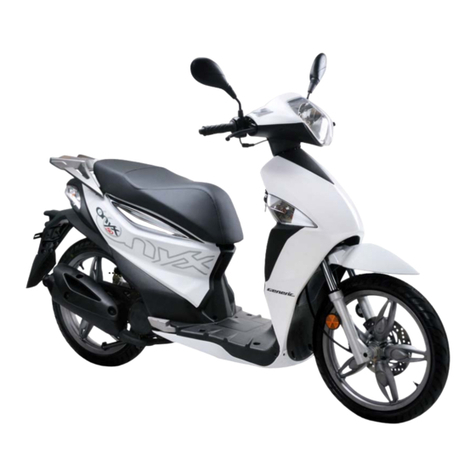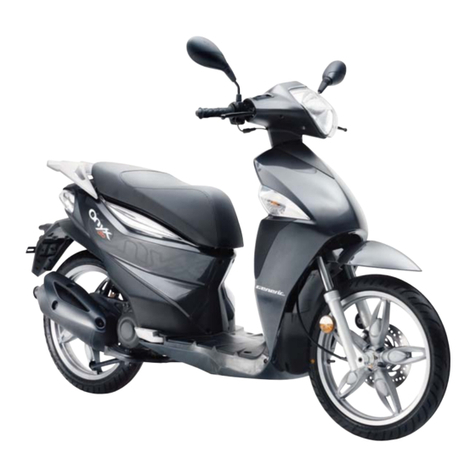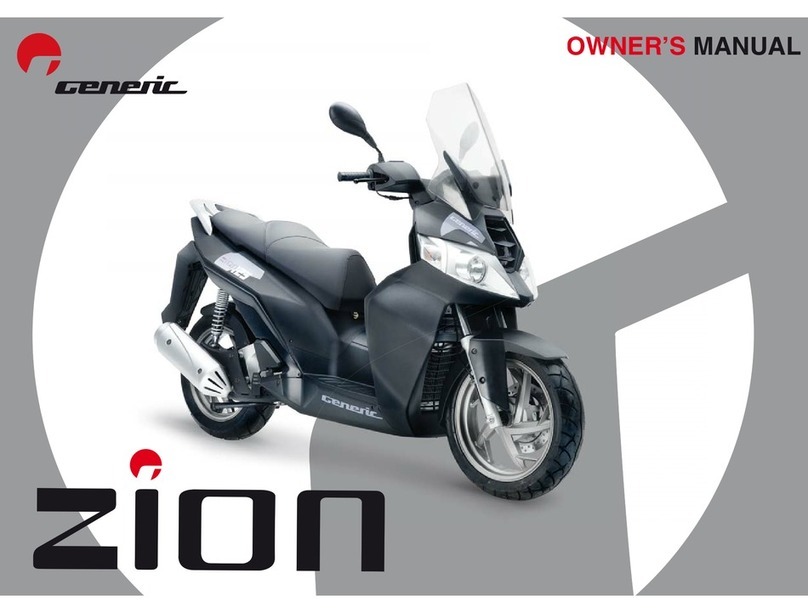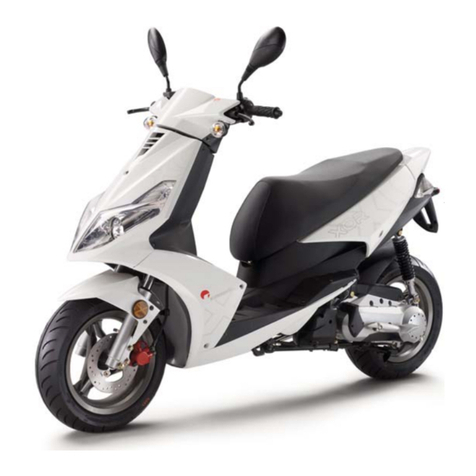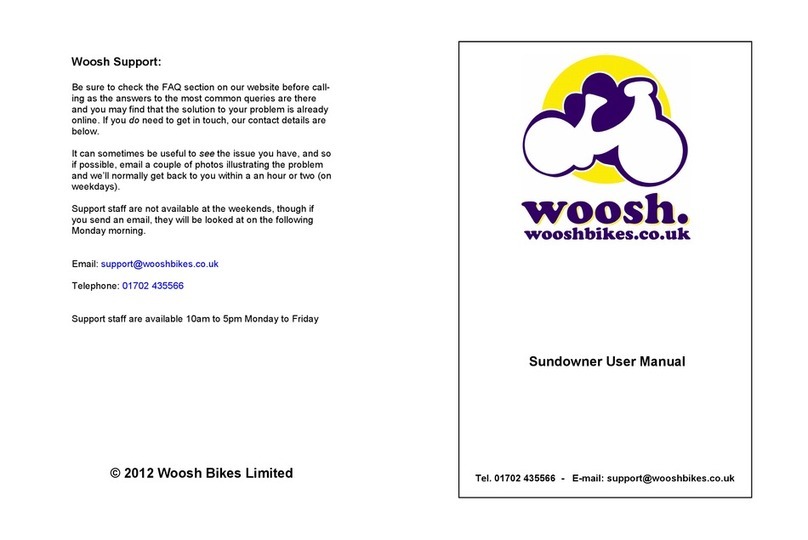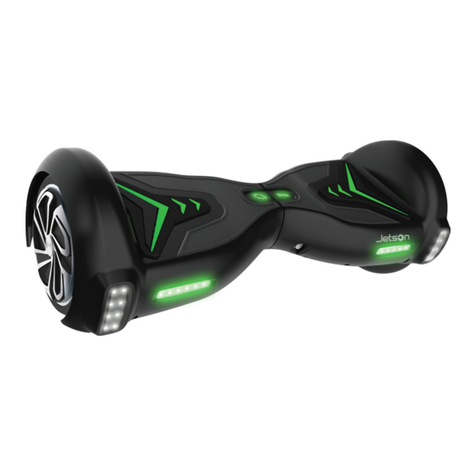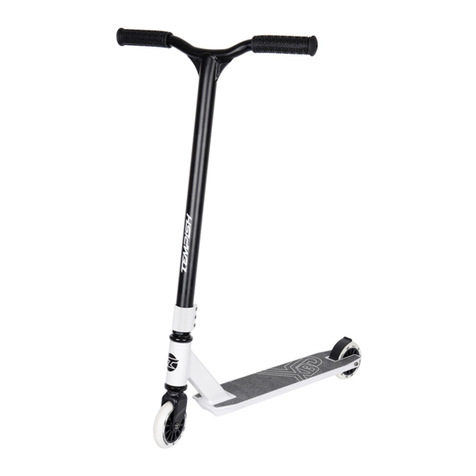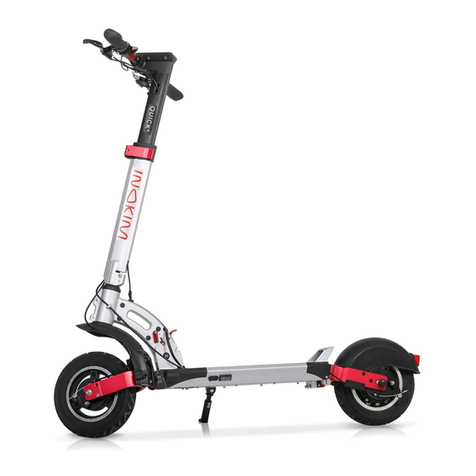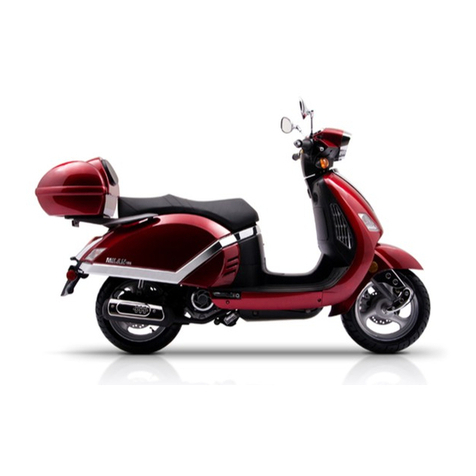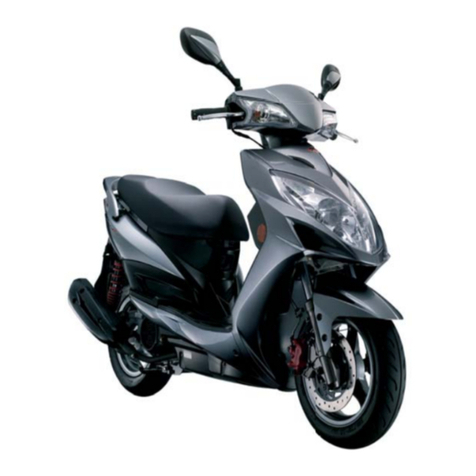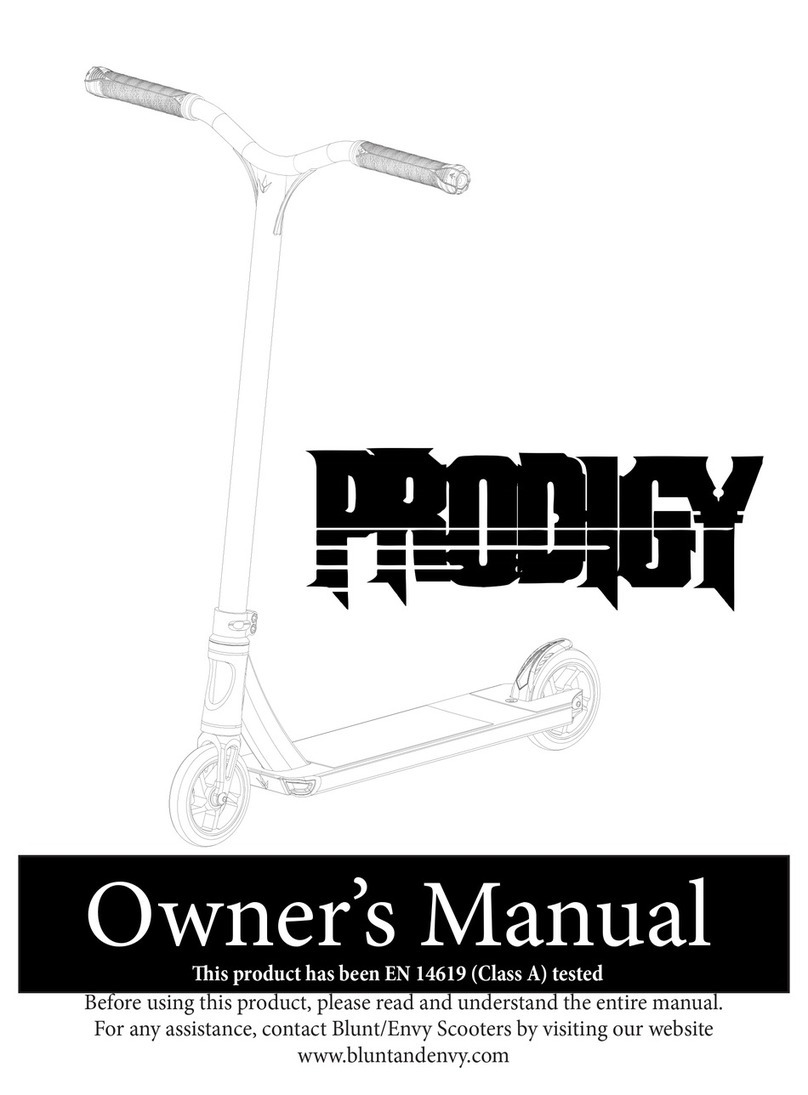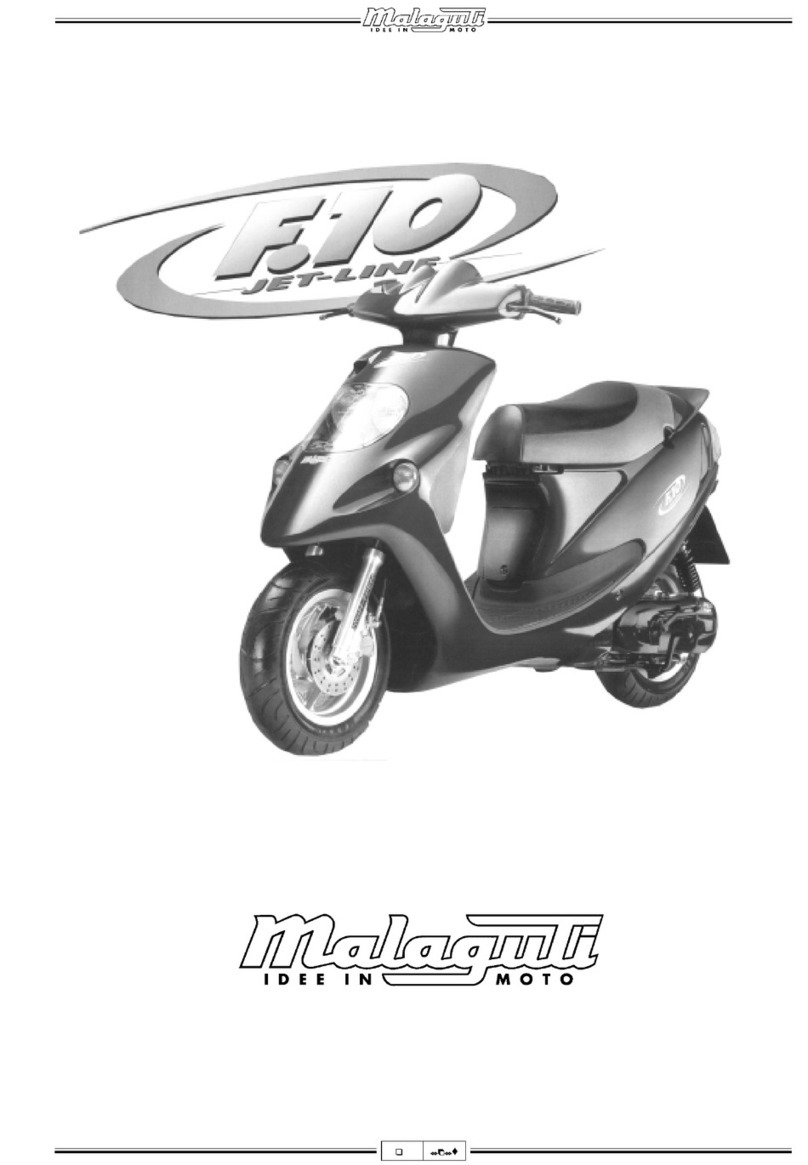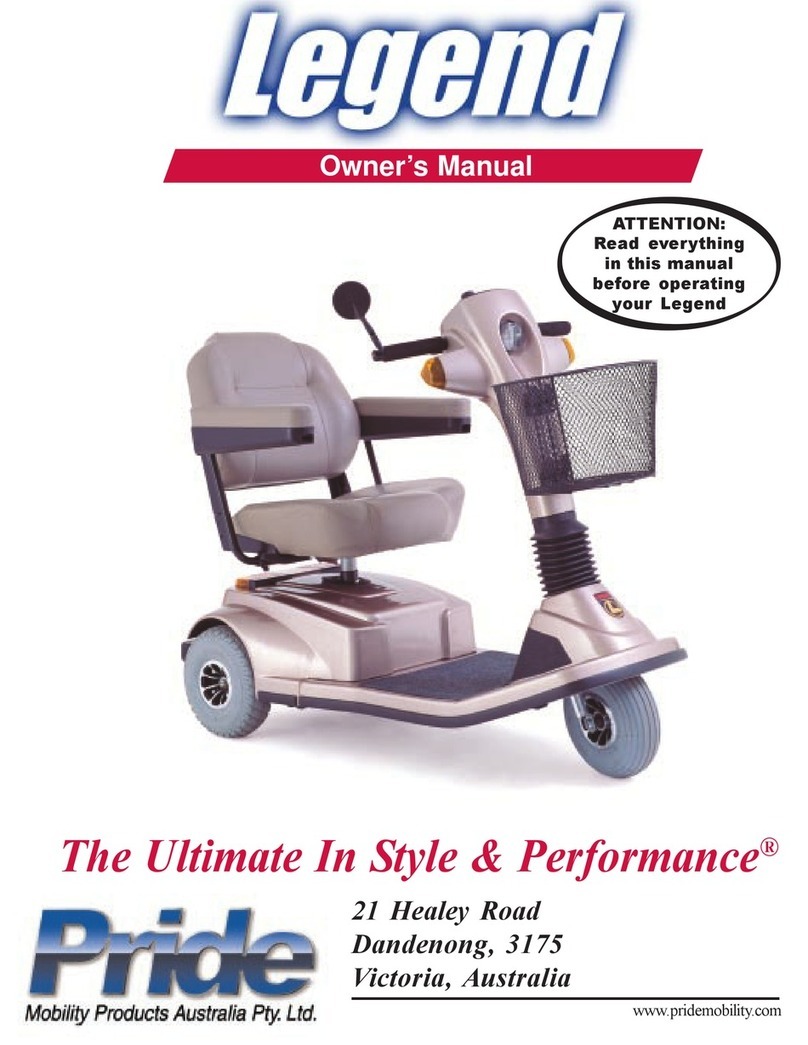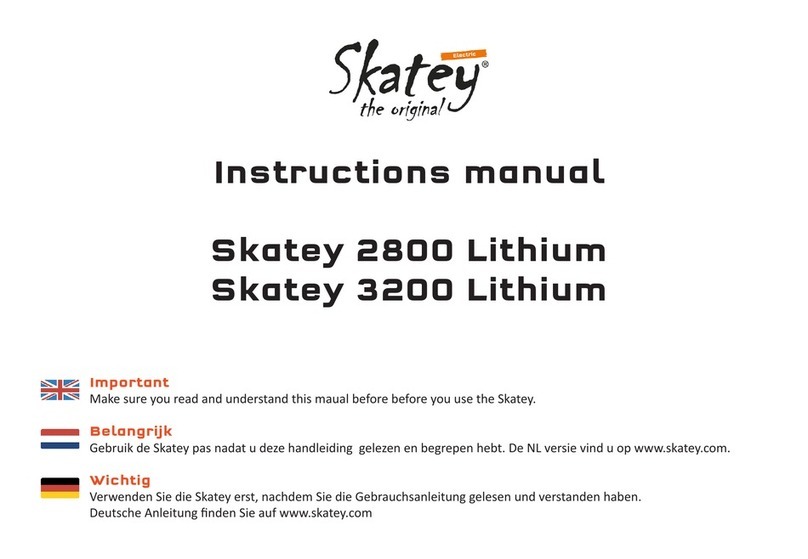Generic Race 50 User manual

Service Manual
Holtvej 8-10, Høruphav, 6470 Sydals
Telefon: +45 73 15 11 00
Fax: +45 73 15 11 01
CVR: 27 73 31 07
November 2010
Race 50

1
User's operation and maintenance manual for
double-wheel motorcycle RACE 50

2
Zhejiang Qianjiang Motorcycle Co., Ltd.
Contents
Contents 2
Preface 4
Documents to be prepared ...................................................................................................................................5
Inspection/adjustment ..........................................................................................................................................6
Inspection and Service of Electrical System 63
I. Battery/ Charging system 67
1.1 Preparation data ...........................................................................................................................................53
1.2 Fault diagnosis.............................................................................................................................................53
1.3 Battery .........................................................................................................................................................71
1.4 Charging system ..........................................................................................................................................72
1.5 Voltage and current regulator.......................................................................................................................73
1.6 Charge coil of the alternator ........................................................................................................................74
1.7 Disassembly of alternator ............................................................................................................................74
II. Ignition system 61
2.1 Preparation data ...........................................................................................................................................61
2.2 Fault diagnosis.............................................................................................................................................79
2.3 Ignition system inspection ........................................................................................................................... 83
2.4 CDI group ....................................................................................................................................................84
2.5 Ignition coil..................................................................................................................................................86
2.6 Trigger .........................................................................................................................................................86
III. Startup system 90
3.1 Preparation data ...........................................................................................................................................91
3.2 Fault diagnosis.............................................................................................................................................93
3.3 Start electric machinery ...............................................................................................................................93
3.4 Start relay.....................................................................................................................................................96
IV. Bulbs/ switch/instrument 73
4.1 Preparation data ...........................................................................................................................................99
4.2 Fault diagnosis.............................................................................................................................................99

3
4.3 Replace the head light bulb..........................................................................................................................99
4.4 Replace bulb of the front turning light.......................................................................................................100
4.5 Disassembly/replace the bulb of the taillight and rear-right turning light ................................................. 100
4.6 Instrument..................................................................................................................................................101
4.7 Main switch ...............................................................................................................................................101
4.8 Horn ...........................................................................................................................................................102
4.9 Handle switch ............................................................................................................................................ 102
Inspection and Service of Chassis 103
V. Brake 80
5.1 Maintenance instruction............................................................................................................................. 107
5.2 Fault diagnosis...........................................................................................................................................108
5.3 Front hydraulic brake................................................................................................................................. 108
5.4 Rear drum brake ........................................................................................................................................ 110
VI.Body cover 86
VII. Front wheel/ front suspension 90
7.1 Preparation data ......................................................................................................................................... 119
7.2 Fault diagnosis........................................................................................................................................... 119
7.3 Front wheel ................................................................................................................................................120
7.4 Steering bar................................................................................................................................................123
7.5 Front fork................................................................................................................................................... 124
VIII. Rear wheel/rear suspension 97
8.1 Preparation data .........................................................................................................................................128
8.2 Fault diagnosis........................................................................................................................................... 128
8.3 Real wheel ................................................................................................................................................. 129
8.4Rear shock absorber....................................................................................................................................130
IX. Fuel tank/seat mat 136
9.1 Preparation data .........................................................................................................................................136
9.2 Fault diagnosis........................................................................................................................................... 136
9.3 Fuel tank/seat mat......................................................................................................................................137
Inspection and maintenance of engine 139
X. Lubrication system 107
10.1 Preparation data ....................................................................................................................................... 143
10.2 Fault diagnosis.........................................................................................................................................144
10.3 Oil pump ..................................................................................................................................................144
XI. Carburetor 111
11.1 Preparation data .......................................................................................................................................149
11.2 Fault diagnosis ......................................................................................................................................... 150
11.3 Disassembly of carburetor .......................................................................................................................150
11.4 Installation & adjustment.........................................................................................................................155
XII. Cylinder cover 116
12.1 Preparation data ....................................................................................................................................... 157
12.2 Fault diagnosis.........................................................................................................................................157
12.3 Cylinder head........................................................................................................................................... 157
12.4 Examination on cylinder head .................................................................................................................159
12.5 Cylinder head installation ........................................................................................................................159
XIII. Air cylinder/piston 120

4
13.1 Preparation data ....................................................................................................................................... 162
13.2 Fault diagnosis.........................................................................................................................................163
13.3 Cylinder body .......................................................................................................................................... 163
13.4 Piston .......................................................................................................................................................165
13.5 Installation of piston ................................................................................................................................170
XIV. Drive disk/Clutch/Driven Wheel / Foot start mechanism 174
14.1 Preparation data ....................................................................................................................................... 174
14.2 Fault diagnosis.........................................................................................................................................174
14.3 Left crankcase cover ................................................................................................................................175
14.4 Drive disk.................................................................................................................................................175
14.5 Clutch/driven wheel.................................................................................................................................178
14.6 Disassemble the clutch and the driven wheel ..........................................................................................180
14.7 Installation ...............................................................................................................................................186
14.8 Foot start mechanism...............................................................................................................................186
XV. Decelerator 137
15.1 Preparation data ....................................................................................................................................... 189
15.2 Fault diagnosis.........................................................................................................................................189
15.3 Gear Case................................................................................................................................................. 189
15.4 Installation ...............................................................................................................................................191
XVI. Crankcase 140
16.1 Preparation data ....................................................................................................................................... 194
16.2 Fault diagnosis.........................................................................................................................................195
16.3 Crankcase.................................................................................................................................................195
16.4 Installation ...............................................................................................................................................199
Exhaust emission system inspection and maintenance 144
XVII. Exhaust emission and control system 145
17.1 Warranty of Exhaust emission and control system..................................................................................201
17.2 Regular maintenance guideline................................................................................................................202
17.3 Mechanical function of the exhaust control system.................................................................................203
17.4 Catalyst converter system ........................................................................................................................205
17.5Countermeasure of idle speed emission exceeding specified value(Two-stroke)................................206

5
Preface
This Manual explains the maintenance of Qianjiang RACE 50.
The documents to be prepared are the maintenance manual and all the operations are included in, please read
the manual prior to operation.
Inspection and Adjustment explains the gist of inspection and adjustment; the maintenance of safety of vehicle
and the performance of each part should come into force since regular inspection.
After Chapter I is the explanation of the gist of disassembly, assembly and inspection of engine, entire vehicle
and electric fittings.
There are exploded view, system diagram, maintenance, fault diagnosis and explanation before each chapter.
Notice:
There is no prior individual notification on the alteration of mode or structure of motorcycle and the actual
product shall prevail if there is discrepancy between the photos, pictures or explanation contained in this Manual
and the actual product.
Zhejiang Qianjiang Motorcycle Co., Ltd.

6
Documents to be prepared
Generalsafety Maintenanceregulation
Specififcation sheet Troubleshooting
General safety
Carbon monoxide
If the engine must be activated, make sure that the workplace is well ventilated. The engine can not be running in a
confined place.
Attention
The exhaust contains toxic gas, carbon monoxide, which can numb people and may result in death.
The engine should be started in an open area and the exhaust scavenging system should be applied if the engine has
to be started in a closed area.
Gasoline
The operation should be made in a ventilated area and smoking or lighting fires should be strictly forbidden in
working space or the place stored gasoline.
Battery
Battery could give off explosive gases, so, keep it away from incineration area or open flame or where smoking is
permissible. When charging, keep it well-ventilated.
Battery contains sulphuric acid (electrolyte) which could result in burn if contacting your skin or eye, so, wear
protective clothing and faceshield.
-If electrolyte spatters on your skin, use fresh water to flush immediately.
-If electrolyte spatters in your eye, use fresh water to flush for more than 15 minutes and see a doctor
immediately.
Electrolyte is toxic. In case you drink some electrolyte inadvertently, drink a large volume of fresh water, milk and
milk of magnesia (a kind of laxative antiacid) or vegetable oil and see a doctor immediately. Keep it at a place
where is beyond reach of children.

7
Maintenance regulation
As maintaining this vehicle, the instrument of metric system should be applied as possible for the reason that the
application of incorrect instrument may demage this vehicle.
Before dismantling from or frame cover of vehicle to maintain the dirt of parts or external subassembly should be
purged in order to prevent that falling into engine , chasis or braking system.
After dismantling and before measuring attrition value, please
clean parts and purge it with compressor.
The rubber parts will be deteriorated due to aging which is prone to be damaged by solvent or oil and it should be
inspected (if necessary, it should be replaced) before
reinstallation.
Sleeve

8
Loosen the parts with multiple assemblies that should be made
from outside to inside and started from small one.
The complicated assembly, transmission case, for instance, should
be stored according to proper assembly sequence in order to
facilitate the assembly in the future.

9
For the important assembly position, it should be given special
attention before dismantling. The parts out of use should be
replaced before dismantling in time.
The length of bolts to assemblies and frame cover are different
which should be installed in correct position and the bolts may
placed in the hole to find out whether they are suitable if they are
mixed.
For the installation of oil seal, the grease should be filled in oil
seal groove; as installing oil seal, it should check the smoothness
of oil seal whether it will likely damage the oil seal.
For the installation of rubber hose (fuel, vacuum or coolant), the
ends of which should plug into the bottom of the joint in order to
ensure that there is enough space for hose clamp to clamp the
joint. The rubber or plastic soldering cup should restore its
Grove
Clamp
Joint

10
original design position.
As dismantling ball bearing, please use the tool to withstand one
or two (internal and external) bearing runners. If the strength is
only applied onto a rolling ring (no matter internal or external),
the bearing may be damaged as dismantling and has to be
replaced.
In both instances, the bearings will be broken

11
Loose cable is a hidden trouble to electrical safety. After
clamped, check each cable to ensure electrical safety;
It is not allowed to leave any wire clip bending towards
bonding points;
Bind each cable to its designated position;
It is not allowed to lay a cable to end or a sharp corner on
frame;
It is not allowed to lay a cable to end of a bolt or screw;
When laying a cable, keep it away from any heat source or
any place where may bite it when it is moving;
When laying a cable along a handle, avoid it being strained
too tightly or loosely and it can not interfere with any
adjacent part at any turning point;
All cables should be laid smoothly without twist or knot;
Before butt-jointing a connector, check if its sheath has been
damaged and if it is overstretched;
If a cable is at a sharp corner or outer corner, use tape or hose
to protect it;
After a cable is repaired, use tape to bind it securely;
Keep all control cables from bend or twist because dumb
control will result in case any control cable is damaged.

12
Motorcycle Identification
1. The vehicle identification number (VIN) is inscribed at
①on the frame. See Figure 1-1. Identification number:
LBBB9212?????????. On the VIN, the 10th digit shows the year
of manufacture and the 11th digit shows the code of the
manufacture plant. The anti-refit name plate is stuck inside the
helmet bucket; the frame name plate is riveted to ②on the
frame.
Figure 1-1
2. The engine series number ①is inscribed on the
crankcase housing. See Figure 1-2.
Figure 1-2
Important Notices
1. Please use genuine parts of Qianjiang Motorcycle. Use of the parts that fail the design specifications of
Qianjiang Motorcycle may cause damage to engine.

13
2. During servicing, use metric tools only. Do not interchange a metric bolt, nut or screw and an English system
fastener.
3. During reassembly, replace with new washers, O-rings, cotter pins and locking pieces.
4. When tightening bolts or nuts, tighten the ones with larger diameters or comparatively located at inside first, and
then tighten all bolts or nuts diagonally to specified torques step by step unless described otherwise.
5. Clean the removed parts with washing fluid. Before assembly, lubricate all sliding planes.
6. After assembly, check all parts for proper installation and correct operation.
7. Before measurement, remove dirt and oil; during assembly, add recommended lubricants to oil sites.
8. When engine and driveline require a long-term storage after dismounted, please apply lubricant to surfaces of
parts to prevent rust and dust accumulation.

14
Specific tools
The so-called specific tools refer to those specifically designed for assemble or dismantle of certain
components of the motorcycle. These tools are usually used in specific locations. Appropriate specific tools are
indispensable in the complete and accurate adjustment as well as in the assembly operations. By taking advantage
of specific tools, the components can be safely, reliably and quickly assemble or dismantle, thus enhancing the
work efficiency and saving lots of efforts.
1.tools used for the engine-overhaul
When assembling or dismantling the engine, specifically designed tools should be used for some certain
components to guarantee a smooth dismounting.
The list of specific tools for the assembly and dismantling of engine components and the figure of real objects
can be seen in table 1-1 and table 1-2.
Table 1-1
Name Remarks
Specialized circular wrench
Clutch holder
Flywheel extractor
Spacer gauge
Dismounting tools for bearing
Assembling tools for bearing
Oil-seal dismounting tool
Handle of dismounting tools
Piston pin exhaustion apparatus
Piston ring opening pincer
Heating plug circular wrench
Measure the thickness of clutch
Cylinder diameter tester
Dial dictator
Used for the assembly and dismantle of flywheel
bolt ,figure 1-3
Figure 1-4
Figure 1-5
Figure 1-6
Figure 1-7
Figure 1-8
Figure 1-9
Figure 1-10
Figure 1-11
Figure 1-12
Figure 1-13
Figure 1-14
Figure 1-15
Measure the inner canon of piston pin,Figure 1-16
Successive table 1-2
Figure1-3 Figure1-4

15
Figure1-5 Figure1-6
Figure1-7 Figure1-8
Figure1-9 Figure1-10
①Handle
Figure1-11 Figure1-12
Thickness
g
au
g
e
(
clearance
g
au
g
e
)

16
①opening pincer ②piston
Figure1-13 Figure1-14
Figure1-15 Figure1-16
2.Tools used for the underpan-overhaul
The list of general tolls and specific tools for the dismounting of underpan components as well as the figure of
real objects can be seen in table 1-17 and table 1-18.
Figure 1-17
Name Remarks
rest wrench
inner hexagon wrench
circular wrench
micrometer
magnetic stand, V-shape block
dial indicator
square caliper
spring clip-ring clipper
whack-type screw drive
front fork oil seal dismounting tools
front part seal element driving-in tools
steering nut wrench
Figure 1-19
Figure 1-20
Figure 1-21
Figure 1-22
Figure 1-23
Figure 1-24
Figure 1-25
Figure 1-26
Figure 1-27
Figure 1-28
Figure 1-29
Figure 1-30
(1)General tools for the underpan-overhaul
Successive table 1-18

17
Figure1-19 Figure1-20
Figure1-21 Figure1-22
Figure1-23 Figure1-24
Figure1-25 Figure1-26
Figure1-27 Figure1-28
1. Bush-head 2.Shake-handle
3.Ratchet type wrench 4.Connecting-rod

18
(2)Specific tools for underpan-overhaul: front fork seal element driving-in tools
Figure 1-29
(3)Steering nut wrench
Figure 1-30
3.Tools used for electric apparatus components
The list of specific tools for the testing of electric apparatus components, as well as the figure of real objects
can be seen in table 1-31 and table 1-32.
Table 1-31
Name Remarks
universal meter
ignition tester
Figure 1-33
Figure 1-34
Successive table 1-32
Figure 1-33

19
Figure 1-34
Table of contents
Other Generic Scooter manuals
